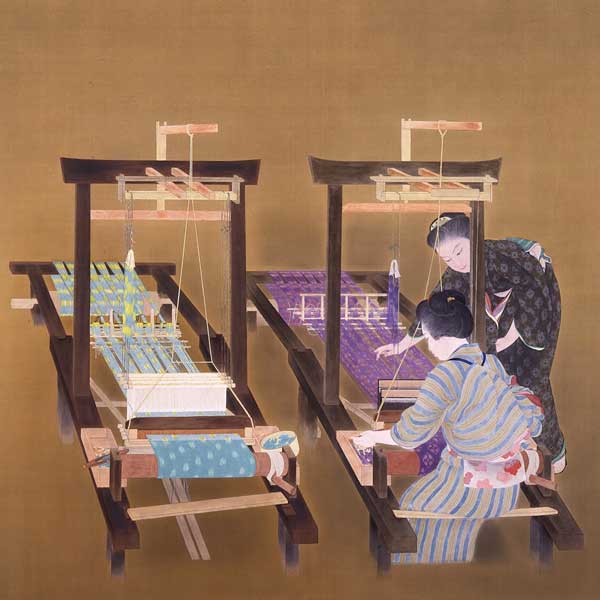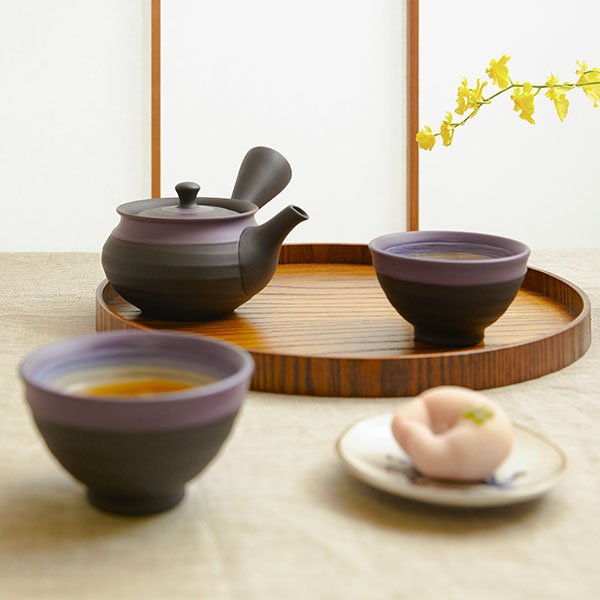20 Best Japanese Gardens in Tokyo for Every Season
by Jessica Esa | TRAVEL
Tokyo’s many Japanese gardens are a must-see when you visit the capital. They are popular and relaxing public spaces where you can view the sakura blossoms, picnic, stroll, and play with friends and family and totally immerse yourself in the beauty of Japan. Japanese gardens often feature ponds, streams, flower beds, cherry trees, and shinto shrines. Some of the very best Japanese gardens can be found in Tokyo, and here are twenty of them! We have divided them by season, so no matter what time of year you visit, you’ll find the best Tokyo garden to enjoy!
If you want to know more about what makes a traditional Japanese garden, check out these 5 Types of Authentic Japanese Garden Design.
Our editors independently researched and recommend the best products and destinations. We may receive commissions on purchases made from our chosen links at no additional cost to you.
Best Tokyo Japanese Gardens for Cherry Blossom Season
1. Shinjuku Gyoen National Garden
© Kakidai / Creative Commons, Shinjuku Gyoen National Garden
Shinjuku Gyoen is one of the largest gardens in Tokyo and split into themed sections (such as French and British countryside landscapes) as well as a traditional Japanese garden. This is one of the best places to experience cherry blossoms during hanami season with over 1500 cherry trees blooming beautifully at once drawing huge crowds every Spring. Tucked away you’ll find a traditional tea house called Rakuutei where you can take part in a tea ceremony and a greenhouse filled with tropical plants to admire. You can easily spend a whole day wandering the walkways around this park.
Address: 11 Naitomachi, Shinjuku, Tokyo (see map)
2. Denpoin Temple Garden
© Senso-ji, Denpoin Temple Garden
At the heart of Asakusa, this small hidden garden is created in the image of classical Chinese paintings and imagery. Some features include a lotus pond, cherry-blossom trees, and a small waterfall. You can also capture unique images of Sensoji’s Goju no To Pagoda and the Tokyo SkyTree from inside. Adding to the air of mystery this garden is only open to the public for a couple of months a year, mainly during the cherry-blossom season so make sure you catch it when it does!
Address: 2-3-1 Asakusa, Taito (see map)
3. Tokyo National Museum
Located on the north side of the Tokyo National Museum, the museum’s Japanese garden is only open for a few weeks a year during April and November for people to enjoy the blossoms and fall folliage. The museum garden is a major hanami viewing spot with over ten species of cherry blossom trees and six tea houses to enjoy within. The tea houses can be rented for tea ceremonies or other events.
Address: 13-9 Uenokoen, Taito, Tokyo (see map)
4. Hotel Chinzanso Garden
The gardens of this 700-year old hotel are intrinsically bound to haiku poet Matsuo Basho and Prime Minister Aritomo. They feature almost everything that makes a Japanese garden unique, including Shinto shrines and torii gates, ancient and weather-worn shinto statues, a proud pagoda standing high above everything else, and delicate water features. The garden at Hotel Chinzanso is one of the quintessential Japanese gardens in Tokyo and comes to life spectacularly during cherry-blossom season.
Address: 2-10-8 Sekiguchi, Bunkyo, Tokyo (see map)
5. Rikugien Garden
© Taichiro Ueki / Creative Commons, Rikugien Garden
Also known as ‘six poems garden’, with eighty-eight scenes inspired by Japanese poetry Rikugien Garden is often considered the most beautiful landscaped Japanese garden in Tokyo. Designed in 1695, you can wander a network of paths around the garden always reaching the central point of the large pond and hill which serves as a viewing point. The park extends its hours during Spring and Fall seasons for viewing the blossoms and foliage. The garden is considered one of the best spots for seeing cherry blossoms with highlights being the area around the Togetsukyo Bridge and around the Tsutsuji no Chaya teahouse.
Address: 6-16-3 Honkomagome, Bunkyo, Tokyo (see map)
Best Japanese Gardens in Tokyo for the Summer
6. Nezu Museum
© Wpcpey / Creative Commons, Nezu Museum
The Nezu Museum is a beautiful structure that has constantly shifting exhibitions showcasing various kinds of historical Japanese arts. But what doesn’t shift is the museum’s traditional gardens, which can be accessed with a ticket to the museum. Once you’ve finished wandering the exhibitions, take a stroll out into the succulent green gardens and let the path lead you past Buddhist statues where you can offer coins for good luck. The garden and the museum together offer a perfect afternoon out in Tokyo.
Address: 6-5-1 Minamiaoyama, Minato, Tokyo (see map)
7. Mukojima Hyakkaen Garden
Mukojima Hyakkaen Garden
Filled with over a hundred species of flowers drawn from Japanese and Chinese literature, you’ll find something blooming in almost any season but the summer is truly dreamy. This strolling garden is over a century old and gives the illusion of being surrounded by nature despite its central location. Don’t miss the clover tunnel, a bamboo structure overgrown with green leaves of the clover a truly magical experience. Although at its best in summer, visitors in the Spring will also find a shock of purple to get lost in with over 360 plum (ume) trees planted in the garden.
Address: 3-18-3 Higashimukojima, Sumida, Tokyo (see map)
8. Tonogayato Gardens
© Irina Gelbukh / Creative Commons, Tonogayato Gardens
Five acres of land house this hundred-year-old garden in Kokobunji. It’s best known for being a garden of levels and varied terrain. Luscious greenery grows in a wild-looking style on steep slopes and surrounding a central pond which even has a natural spring feeding into it. The pond is populated by small goldfish and, in the garden, you’ll find a tea house to enjoy as you bask in the absolute calm that the garden offers.
Address: 2-10-8 Sekiguchi, Bunkyo, Tokyo (see map)
9. Kyu Furukawa Gardens
Kyu Furukawa Gardens
A beautiful garden to visit in the summer due to the many species of flowers that bloom including roses, peonies and azaleas, although you’ll find cherry blossom and maple trees making it stunning at all times of the year. This garden very much fuses Eastern and Western-style with an English-style villa and rose garden leading into landscaped grounds where you can find a pond in the shape of 心, the kanji for the heart, as well as a pond and waterfall.
Address: 1-27-39 Nishigahara, Kita, Tokyo (see map)
10. Kyu-Yasuda Teien Garden
© GoTokyo.org, Kyu-Yasuda Garden
Originally built as a daimyo garden during the Edo Period, it adjoins Yokoamicho Park meaning you can easily extend your walk and visit The Memorial Hall to those who died in the Kanto Earthquake and in the Tokyo bombings. Within Kyu-Yasuda you can see the iconic red bridge and admire the flowers which bloom in the summer. A lantern festival or Noryo-no-yube is held in early August where temporary stages serving tea are built on the pond and traditional music is played.
Address: 1-12-1 Yokoami, Sumida, Tokyo (see map)
11. Shin Edogawa (Higo Hosokawa Garden)
Shin Edogawa
Tokyo’s Kanda River, which flows near this garden, was originally named Edogawa (or Edo River), hence the name of this garden which stayed traditional after the river’s name was changed in the 1960s. This is appropriate considering the park’s connection to the Edo period’s Hosokawa samurai clan. In the garden you’ll find natural springs, bamboo fences, and stone lanterns - all integral parts to almost any Japanese garden. The garden itself is only open during daylight hours, but entry is free.
Address: 1-1-22 Mejirodai, Bunkyo, Tokyo (see map)
Best Japanese Gardens to See Fall Colors in Tokyo
12. Koishikawa Korakuen Garden
© Himuchiya / Creative Commons, Koishikawa Korakuen Garden
One of the oldest Japanese gardens in Tokyo, it was built in the early Edo Period (1600-1867) and replicates both Japanese and Chinese scenery with a network of paths through the park to explore. The gardens are particularly stunning during the fall season as maple trees surround the three ponds in the gardens creating a dazzling reflection of reds and oranges. You’ll also find a grove of gingko trees in the southeast corner of the park which drop a carpet of yellow on the ground during fall.
Address: 1-6-6 Koraku, Bunkyo, Tokyo (see map)
13. Happo-en
Happo-En
Bonsai trees over a hundred years old and a magnificent koi pond await visitors to Happo-en garden, built in the 17th-century. It’s a serene corner of Tokyo that serves as a popular marriage photography spot with over 2000 weddings held there every year. Inside you’ll find cherry blossom trees, and maple trees that turn the park crimson in the fall, with a traditional restaurant and tea house in the park there are plenty of places to sit back and enjoy the view.
Address: 1−1−1 Shirokanedai, Minato, Tokyo (see map)
14. Hamarikyu
© GoTokyo.org, Hamarikyu
An expansive park in Shiodome district, it has served as a duck hunting ground as well as a residence to a feudal lord, and even though the garden itself was bombed the tea houses within survived. There are three seawater ponds inside the garden which change water-levels with the tide — Shioiri-no-ike is the largest pons and features an island with a traditional teahouse Nakajima no Ochaya and bridge which has a wonderful view in the fall as it overlooks the maple trees.
Address: 1-1 Hamarikyuteien, Chuo, Tokyo (see map)
15. Mejiro Garden
Mejiro Garden
A fairly hidden strolling Japanese garden near Ikebukuro which is well-worth heading over to in the fall when it’s at its most breathtaking, and when it also stays open much later until 21:00 for lit-up night viewings. The garden contains a pond and small waterfall as well as shrines and a teahouse, it’s a lovely way to escape the hustle and bustle of the city for an hour or two.
Address: 3-20-18 Mejiro, Toshima, Tokyo (see map)
16. Imperial Palace East Gardens
© JenniKate Wallace / Creative Commons, Imperial Palace East Garden
Although you can still see the exterior of the palace, the foundations of the keep, the entrance gates, and guardhouses, this grand park is the only area of the castle that is actually open to the public. You’ll find a miniature traditional garden in the secondary circle of defence area featuring a small pond and a bridge. The garden is pleasant for a walk or for enjoying a hanami party during spring but since there aren’t many trees to provide shade during the hot summer this garden is more suited to the cooler seasons. While you’re there you can visit the Museum of Imperial Collections which, a collection of over 9500 pieces of artwork owned by the imperial family.
Address: 1-1 Chiyoda, Chiyoda City, Tokyo (see map)
Best Tokyo Japanese Gardens for Winter
17. Kiyosumi Gardens
© Kiyosumi Garden
This beautifully landscaped garden is stunning all year round and is particularly famous for its special stones from all over Japan. The stones are used throughout the garden and as stepping stones to create a path (called isowatari) through the water. As you walk you’ll be able to see fish and turtles swimming below. Another major draw to the park are the three main islands on the pond — on one of them you’ll find a tea-house inspired restaurant overlooking the pond and grounds. This is a particularly lovely garden to visit in the winter with evergreen trees and a beautiful view over the icy pond from indoors.
Find out more about why Kiyosumi might be Tokyo’s Most Beautiful Japanese Garden.
Address: Kiyosumi Teien, 3 Chome, Koto, Tokyo (see map)
18. Kyu Shibarikyu Garden
© Rs1421 / Creative Commons, Kyu-Shibarikyu
Built on land reclaimed from Tokyo Bay, this park is a must-visit to see the majestic Sensui Pond which is inspired by the Western Lake in Hangzhou, China. On the pond, you can visit two small islands including Nakajima and the smaller Ukishima. Oyama hill, the highest point of the garden which descends into smaller hills around it giving some height which detracts from the towering buildings around you. This park has something to offer all year with cherry blossom trees, winter apricot trees and summer iris flowers, while still retaining greenery throughout the winter.
Address: 1-4 Kaigan, Minato City, Tokyo (see map)
19. Hotel New Otani
This 10-acre, 400-year old Japanese garden can be found inside the historical luxury Hotel New Otani, but you can visit for free even if you’re not a guest. Gorgeous at anytime of year, you’ll find an impressive waterfall at the centre of the garden and a stunning red arch bridge with over 300 carp in the pond. The rotating restaurant of the hotel offers views of the garden meaning you can enjoy this garden whatever the weather.
Address: 4-1 Kioicho, Chiyoda, Tokyo (see map)
20. Yumenoshima Tropical Greenhouse Dome
Yumenoshima Tropical Greenhouse Dome
A more recent addition to the garden scene, built on a reclaimed landfill, Yumenoshima (“Dream Island”), and opened in 1988. This extravaganza of over a thousand tropical plants within a giant greenhouse with three domes is a special spot for nature lovers. You’ll find everything from the typical to the most unusual and rare plants set out in a way that’s a real experience to walk trough. You’ll also find a cafe, restaurant, theatre, and exhibition hall.
Address: 2-1-2 Yumenoshima, Koto, tokyo (see map)













TRAVEL | March 15, 2024